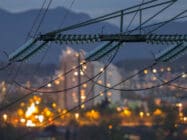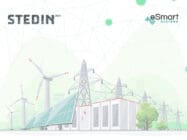
Synthetic data generated from real data is opening the way for new insights on energy sector initiatives and their impact on consumers.
“There’s lots of fantastic datasets that exist in siloes that we can pull together, but when the data we needed to paint a holistic picture wasn’t accessible or didn’t exist, we started synthesising it using the power of AI,” says Myrna Bittner, CEO and co-founder of Canadian analytics company Runwithit (RWI) Synthetics.
“And as this was one of the biggest barriers that our customers were facing, we took it as a challenge and an opportunity to really evolve the generation of synthetic data.”
In essence, synthetic data is derived from multiple datasets, which are expanded using AI to fill gaps where data may be missing or not capturable, for example due to privacy concerns. The synthetic dataset can then be used to play forward ‘what if’ scenarios to provide insights and aid planning.
More on data
What energy data is of most interest and why?
In particular, it is very much focused on consumer-related data, which is often difficult to access due to privacy concerns, and difficult to interpret due to variations and unpredictability in behaviours.
However, it is critical as human activity is also one of the most important factors when considering technology deployments or other future scenarios.
As an example, Bittner cites a project focussed on e-mobility and the potential for autonomous shuttles in Kuala Lumpur with the Toyota Mobility Foundation and the local government, in which it was necessary to synthesise the city’s population and the people’s daily travel patterns and choices at a hyper-localised level.
That required the input of local survey and census data as well as other local research study data.
“But we had to go beyond that to other markets where there have been some pilots, even covering issues such as how people’s risk preferences and tolerances changed with the level of attendance in the shuttle, and we could put that in the model,” says Bittner.
Interestingly in that Kuala Lumpur model, she says the finding was that the ageing demographic who were expected to use shared autonomous shuttles weren’t, and those who were currently using micro-mobility switched to the shuttles, with surveying of the synthetic population highlighting reasons including convenience and productivity.
“These are ultimately ‘what if’ scenarios that no one has answers to, but presenting them gets people around the table and they can say if it would be an accurate finding. We can then add new contexts or systems or infrastructures – it’s a process.”
Going behind the meter
Although RWI Synthetics was established as far back as 2014 – and the development of its platform started several years earlier – the company’s entry into the energy sector is more recent, with projects with Itron and EPRI starting in 2019.
For the company it was arguably very apposite, with government-imposed Covid restrictions changing human behaviours; and consequently the load curves of utilities.
More about data
Why a proactive data strategy is the key to grid resilience
“Many [utilities] lost their ability to forecast and that was the step for us for how to enable them to see what’s going on behind the meter,” she says.
“We didn’t have the time to go through the regulatory process to share metering data but we needed to know what’s coming next and that led to questions such as: Can we synthesise individual energy behaviours? Can we amalgamate that to generate load curves? Are those load curves accurate enough to be utilised in the utility industry? And can we look at things like the experiences of consumers when the lights go out?”
Bittner says it was such questions that demonstrated the potential for the use of synthetic populations in the energy sector, not only to inform behind the meter but also to investigate potential behavioural changes, such as are demanded for the more efficient use of energy and responses to new technologies such as electric vehicles and charging management.
Smart energy and smart cities
The project with Itron was focused on developing a demonstration for its clients of a city fitted with the company’s IoT devices and controls, including smart meters and smart streetlighting and features such as high-flow gas shut-offs.
As part of that project, Bittner mentions the creation of a ‘synthetic Silicon Valley’ to investigate the outcome of an earthquake and how the devices and controls would impact the time to return to normal and for example how the communication streams could be used for emergency response actions.
In addition to geospatial and other datasets on the devices, inputs included people’s reactions and responses during earthquakes, drawing on research from countries such as China, Japan, and New Zealand.
The project with EPRI through its Incubatenergy Labs programme was focussed on providing insights on resilience in the light of Covid and other potential disasters in Arizona utility Salt River Project’s service area.
Subsequently, it has evolved and in the current phase involves the Tennessee Valley Authority, the Nashville Electric Service and the City of Nashville, with the development of a ‘synthetic Nashville’ to investigate cold waves and how to build resilience into communities and their energy systems.

“One of the most insightful things we have been asked to look into is disadvantaged populations and the opportunities for distributed energy resources and community resilience hubs,” Bittner says.
She explains that the model (and the findings, of which more information will be made available later in the year) is based on three distinct but interconnected levels – the people in the relevant areas, the resources available at the community level, and the utility processes.
“We have created a massive amount of data about the population and we started with understandings on energy equity and distinctions in the population. Where we are ending up is with insights that cross the boundaries between TVA, Nashville Electric Service and the City, which should be unifying in terms of the approach that is being taken and the impact of the investments that can be made.”
Looking ahead
Bittner says that one of the near-term actions that RWI Synthetics is pursuing is making its technology platform more accessible and open and the insights more shareable and she promises that some partnerships are in prospect.
“We’ve been finding that at this time of accelerated change, it is very helpful to be inclusive of the diversity of perspectives in the scenarios and to be able to reconfigure them if people have different opinions or want to compare one technology decision with another and their social impacts,” she says.
“More and more it’s about looking forward to the next 20 or 25 years. To be able to see the impact new technologies such as energy technologies can make over that time can be very compelling.”








